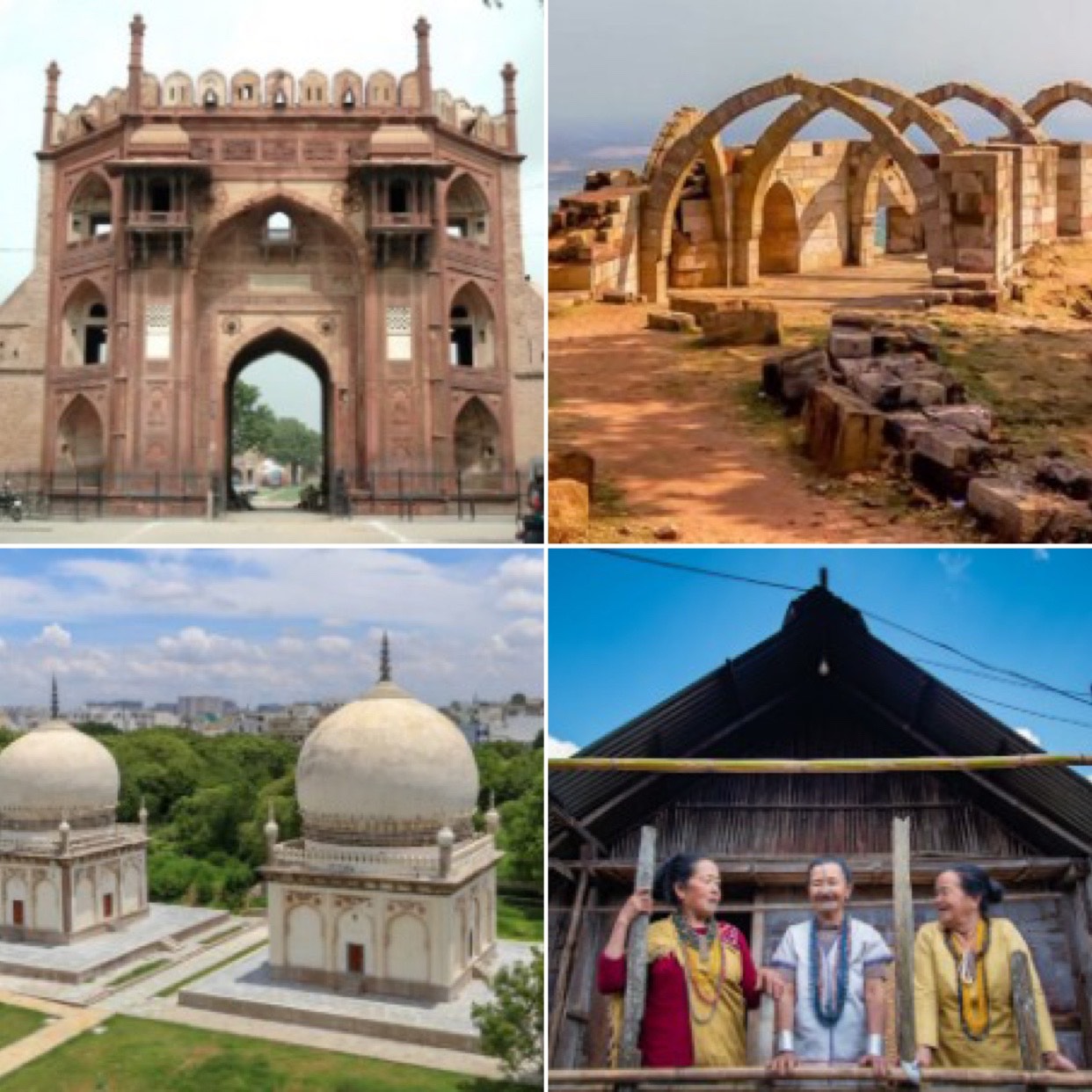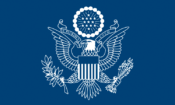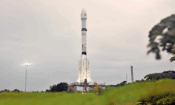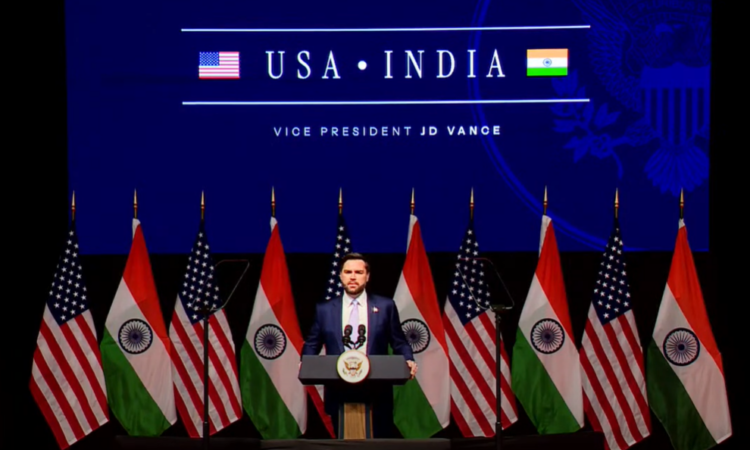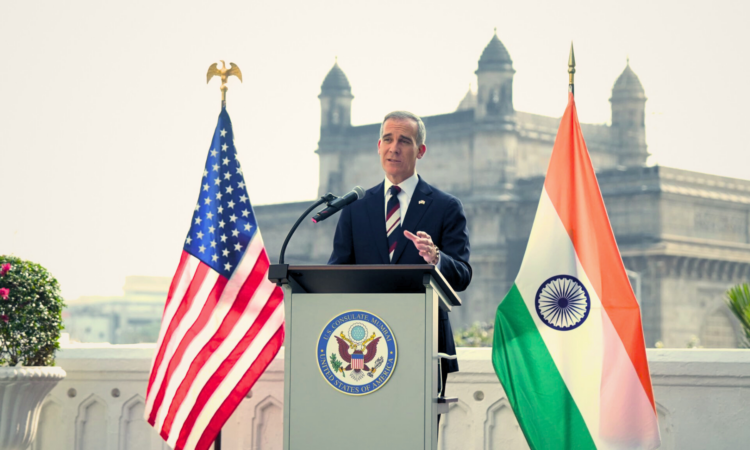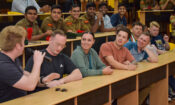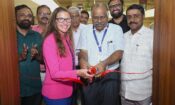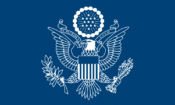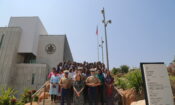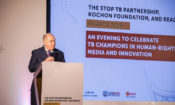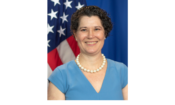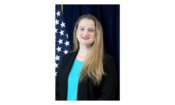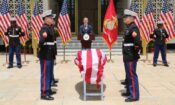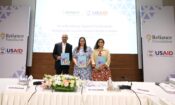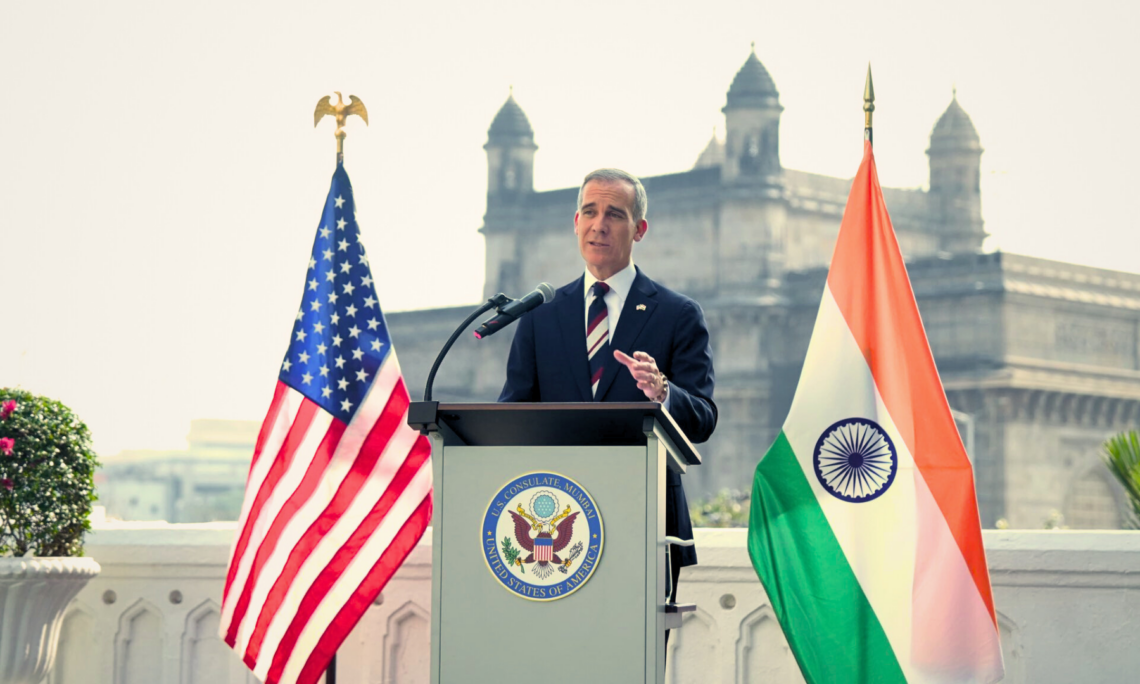Ambassador Eric Garcetti’s remarks as delivered
Mumbai, January 09, 2025
Namaskar and good morning, everyone. I want to thank — On a personal note first, allow me to say a couple words about Mike Hankey and our Mumbai post here. You know, when I first came as ambassador, to Mumbai, and I was telling Madam Chief Secretary that this is – outside, of course, the home that I have in Delhi – the state and city I’ve been to the most times. This is my 13th trip as ambassador to here – to Mumbai and into Maharashtra. And MEA has always – supported by an incredible staff, by the way, who said you got to come back, you got to come back, you got to come back – but also the MEA that is here and the incredible cultural, economic, strategic, political and people-to-people community that is here. It’s a place that always touches my heart. It is a place where you see and can understand India’s past. Where you can reflect on this moment of its present, and you can glimpse what its future looks like.
It’s rare that in our life, which is kind of like a giant run on sentence, that we get to punctuate, that we get a comma of a pause, a period of the end of our thoughts. Maybe a question mark to ask what’s next, let alone an exclamation point to celebrate in moments like this. But Maharashtra and our mission here, in this country, led by not just Delhi but led by Mumbai.
I want to thank Mike Hankey, who has been a friend, a brother, a great principal officer, who I’ve learned much from and his team, which know from Mumbai – because it’s tough when you’re the second city. I come from Los Angeles, so I know what it’s like to not be the capital city or the biggest. To know that this is an international capital, that this is a national city, and when it comes to economic policy or trade, when it comes to the strategic work that we’re doing, that Mumbai really is the size – larger than most of our embassies around the world.
So, to our fellow diplomats who serve here as consuls general; to Admiral Cavanaugh, who, it’s just a pleasure to see again – we saw each other last in Los Angeles when I was wearing a different hat as mayor, what you’d call Chief Minister of Los Angeles and we had Fleet Week, where we showed off our Navy to our city; and to each of you who are here in this moment, that is both a physical precipice and a temporal one. I want to thank you for taking the time to listen to my thoughts on peace today.
And as Consul General Hankey said, this isn’t just any day because in a few hours when Washington wakes up, we will begin a national day of mourning for Jimmy Carter, who is a submariner, who went to the United States Naval Academy and then put on a uniform to defend the United States, our values and our people as an officer in the United States Navy. But then served his local and regional community as a governor and became our 39th President of the United States of America. His ties to India, as Mike mentioned, are well known.
In 1978, he came here, gave a speech that got a standing ovation in the Parliament, and he talked about his mother who when she was 68-years old – Lillian Carter, who came here to Maharashtra to serve in the Peace Corps – she was a nurse who worked in a hospital in the Godrej Colony just outside, now, it’s Greater Mumbai, to work with Indians, who had the scourge of leprosy and modeled for her son that service is not something that stops just because you enter your seventh decade, but something that you give year after year, day after day.
It frames what I want to say today, because peace isn’t just something that you accomplish. Peace is something that every single day you must build. And President Carter certainly did that in his public and his private life, whether it was achieving Middle East peace when few thought that that was possible, or whether it was the work that I and my wife were so lucky to experience first-hand as a former president, when he would volunteer and once a year go to a different place around the world to build housing for the poor through Habitat for Humanity.
My wife was on one of those builds in the Philippines. I couldn’t join her there, though I built it with President Carter in Los Angeles. And she said at the end of the day, it was hot in the Philippines outside of Manila. People were sweaty, they had worked for eight hours doing construction. And just when they thought they were going to have a break, he would position himself at the exit of the work site. And then as they were leaving, saying thank you President, he’d say, hey, friend, do you think you might be able to contribute another half hour of work? And he pushed them beyond their own limit to serve even more. She also told me that he said don’t ever touch my tools. So, you know, he also constrained those things. But he was a person who lived his life, breathing and living peace in a way that I hope inspires us here today, and I’d like to dedicate my words today to his memory and to Rosalyn Carter as well. May we all live lives as rich, as full and as giving as they did.
And thank you to the Taj Hotel. This is sacred ground, not only because we lost Rajan Tata this year. The Tata Group built this hotel at a time that Indians couldn’t get into hotels in Mumbai and built not just a hotel, but arguably the most iconic hotel, not just in India but one of the two or three in the world. I think I’ve stayed in more of the different rooms here – if you ever want an analysis of the different suites and you open up the guestbook and you see the rockstars and the Bollywood stars and the heads of States and ambassadors who’ve stayed here, this place is rich and teeming with history. But it’s also been a place, of course, that is so near and dear to us because of its significance to the Indian people. As we mark the 16th anniversary of 26/11, where here the bravery of a country was shown in the face of the horrible terrorism that ever visited upon this city and of this nation.
When we look at Mumbai, this incredible industrial hub, this place, that is rich with ideas, that is filled with people who are always looking at tomorrow differently than today, it also holds a significant relationship in the U.S., United States friendship, since 1838, when this consulate was established. One of the first consulates we’ve had in the world and by the way India was the second country in the world that we opened up any consulate at all in Kolkata in 1792, if you can imagine that.
We know that the ambitions that we’ve had, what we can achieve together has been linked to understanding this place and the work that this great country has been able to do, not just for itself, but indeed increasingly together with the United States, how we can do that for world.
I’m fond of saying the U.S. and India, our relationship is not additive, it is multiplicative. It’s not India plus the U.S., but when we get together, it’s India times the U.S. Whether it’s developing vaccines, whether it’s looking at international trade, whether it’s the global commons, we aren’t countries that just think about what’s best for us and our people. Though we do of course first and foremost make sure we take care of our own. But we just as instinctively think about the world and how the impact of what we do, whether it’s militarily, whether it’s in health, whether it’s climate, whether it’s women’s empowerment, what effect these things can have with two great nations that have a responsibility beyond our borders.
While the United States has been struggling and working through that sometimes-failing forward, but each day getting better at achieving our ideals, these two constitutional democracies, India has been entering its next chapter and a new phase as well in the way that it positions itself globally to preserve those global commons for everyone.
Our defense partnership is based on a few different things. And peace is more than defense. Peace, for all of us, is about the maintenance and construction. I wrote some notes, I’m just finding them here, there we are – of how we build a peaceful world. And I would say, the four P’s that I have spoken of as ambassador, that really describe the work of our mission here: peace, pursuing and preserving peace, promoting prosperity, protecting our planet, and then pursuing the people-to-people ties that define us, that, those four things.
I’d like to offer three P’s, just about peace, because it’s really the principles, the partnership and the practice of peace that will ensure the goals that we now share. We no longer have a discussion of whether the United States and India share common goals of peace, but how we get to those goals, required principles that we articulate, a partnership that we build and the practice of us getting to know how to operate together to ensure that peace.
And then a second peace that I’d like to frame as well is that peace isn’t just something that’s military. It isn’t just – I think those of us that have worn our nations’ uniforms know that diplomats and people-to-people are so critical because without diplomacy, without people-to-people ties, all we have is weaponry. All we have is war. And so what we can do, whether it’s in law enforcement to keep the peace together with transnational threats from trafficking to drug dealing to other things, or whether it’s the building of civil societies in which we look at those who are most disempowered and making sure we lift up women, minority communities, that we have a rule of law, human rights, civil rights, those are the things that preserve peace in both of our countries, proud traditions. Just as India has exported that to the world, Martin Luther King, inspired by Mahatma Gandhi, to fight for the rights of all people in our nation. We see that partnership as critical for the work that we do together.
But let us start with the work of defense. We are major defense partners. We are trusting each other, knowing each other, operating with each other more than ever before in our history. We’ve advanced India’s emergence as a maintenance and repair hub for forward deployed U.S. Navy assets, recently signing three mastership agreements and one boat repair agreement in Indian shipyards. We’re developing weapons together, R&D, and coproducing more. Some of our weapon’s systems depend on the manufacture of great Indian industrialists.
And vice versa Indians are purchasing U.S. systems at a rate never seen before. From Apache helicopters to C130 transport aircrafts, U.S. defense exports to India have grown from near zero in 2008 to over 25 billion in 2023. We aren’t just selling systems to India we’re making systems with India. The United States ranked among the top three destinations for Indian defense exports as well. We know that this creates jobs here in India as well as jobs in America. And when we look at the work, the state-of-the-art systems.
You know, I was in the Oval Office in one of the greatest moments of this ambassadorship. Somebody asked me, what were the high points of the last couple years? And I said certainly being in the Oval Office with Prime Minister Modi and President Biden, there’s just six of us. I realized nobody was taking notes. I don’t think it’s the Nixon White House anymore, so I don’t think it was taped. So, I’m busily, you know, writing down everything that’s said, just to have it for history. But one of the things I wrote that I recently re-read was when President Biden took– turned to Prime Minister Modi as we talked about defense, and he said: The next ten years will change how we fight wars and keep the peace more than the last hundred years has. That technologically, if you are not ready for change, you will be left behind.
You see this, whether it’s in Ukraine-Russia conflict, where there was the ability of relatively low-cost sea-based vehicles that have deterred the second largest Navy in the world from operating or whether we see in the Red Sea cheaply made drones and missiles that non-state actors can use to disrupt global trade. The big system era isn’t over, but the small system, the networked war is upon us, and the United States and India, I think, are the two best countries position to understand this and if we get it right to build this out. India, where we have more brilliant IT engineers than any country in the world, where networks are what we build every single day in this country. In the United States, where startup and entrepreneurial mindset is what’s defined our nation, the American Dream and the Indian Dream, I always say our flip sides of the same coin. We must define those technologies together.
But we must not just emphasize technology. We have to emphasize people. We’re proud that the United States is now India’s number one military exercise partner, and we’ve expanded our joint military exercises in scale and in scope. U.S. and Indian troops conduct joint training and operations from the mountains of Alaska to the Indian Ocean through exercises such as Yudh Abhyas, Tiger Triumph, Malabar, Vajra Prahar. We have seen that the difference between getting to know fellow officers and enlisted men and women, the relationships that we have built, it isn’t just about knowing how we operate but knowing the people who do the operation that is building the security for tomorrow.
We are rapidly expanding through the Quad and bilaterally how we will respond to natural disasters across the Indo Pacific and our Logistics Exchange Memorandum of Agreement, Communications Compatibility and Security Agreement, Industrial Security Agreement, all of these I know sound like technocratic things, but what they say, bottom line, is that we are working together, understanding each other better, and that we are pledging to deepen those ties moving forward.
Let me get to the principles for a moment, because it’s great if we have technology and we know what the future brings. And it’s wonderful if our people know each other more than ever before. But undergirding all of that is our allegiance to the values that we share. We’re often fond of saying America is the oldest continuous democracy in the world, India is the largest. You can also say we are the two largest democracies in the world. We’re constitutional democracies. We are based on the idea of the dignity of every human being in our polities and beyond. But we also share a vision beyond that of a free open Indo-Pacific, one that’s inclusive, one that’s based not on might makes right, but that right makes might. And that the strength of who we are is based on the values that we put forward.
India’s incredibly impressive commitment to countering piracy – the operations we just saw this past year when India had ten ships deployed in the western Indian Ocean underscore that India is ready for the world stage in a way that an independent India has never seen. Similarly, the United States people often say – I love it when people kind of sometimes beat up on the U.S, but then they say go make peace in a difficult conflict. Well, welcome to great power status India, because with great power comes great responsibility. But what we can do together is feel less alone. When we know an Indian ship is taking care of a piracy incident or the United States is here in the Indian Ocean together tracking threats as one grouping instead of a single nation.
But we also know beyond the military that transnational challenges know no borders. The scourge of drug trade, the trafficking of persons and arms, call center scams, things that don’t look at the map and say, oh, there’s a border between our countries, we cannot act. The United States and India, I am very proud over these last two years, have deepened the work we are doing in our law enforcement cooperation together.
In March of 2023, we supported an anti-trafficking conclave here in New Delhi that convened officials from across India’s government, civil society and academia. This collaboration led to actionable items to combat cyber enabled trafficking, protect victims, and promote justice.
In September 2024, we supported conference that the government of Andhra Pradesh did to convene 27 different states across India, 30 civil society organizations and a central government crime investigation agency as well. We are working together on combating the illicit drug trade. And I want to thank the Indian Navy for the work that it does to intercept here in the Indian Ocean, common threats, the way that we are able to take down Mexican drug cartels operating and creating drugs here in India. And India most recently joined our alliance against the synthetic drugs that are being produced and killing. Now the number one killer of young Americans is fentanyl and India stepped up as a founding member. I was there at the UN when External Affairs Minister Jaishankar spoke and India joined to help us get after precursor chemicals, because the great pharmaceutical industry that’s here in India wants to make sure that those precursors are going to the right and legal drugs, not to drugs that kill our people and that can kill yours as well.
The values that we share also underscore that we believe that democracy only thrives when everybody thrives within it. And I want to thank [Consul General] Mike [Hankey] and the entire mission in India for the work that we have done to uplift women. India is so focused on this. I know the Prime Minister and state governments know that the success of India will depend on how successfully women are able to be lifted up, not just in government but in private sector and all our work that we are doing here to lift up women entrepreneurs. The work that Boeing is doing to bring engineers and pilots up that are women right here. We’re trying to leverage what we have as investments from America to pursue that same joint vision and vice versa with Indian companies in the United States as well.
We also face, of course, the ongoing threat of terrorism, something that, as I mentioned here in this hallowed ground, we don’t have to remind what the human cost can be. The 16th anniversary and the first time I visited here, when I went downstairs to pay tribute to the memorial of the lives that were lost. Employees who still work in this hotel, who were here that day, for us, September 11th, and for citizens across the world who face the threat of terrorism that takes too many innocent people still today.
Part of President Carter’s legacy, of course we remember is intertwined with the attack on our embassy in Tehran. Victims that today are still alive are able to testify the terrorism is at its core, just that – an attempt to scare us away from our values, instead of to run towards embracing them.
But I’m proud to say that last March, the United States and India held the 20th meeting of our Counterterrorism Joint Working Group where we come together with sharing intelligence for our law enforcement works on threats, our cooperation includes increased information sharing, capacity building, coordinated efforts to bring perpetrators to justice. Like I hope, we will see in the Rana case in a matter of weeks, if not just a few months from now, who is responsible for the bombings and the attacks that happened here.
But groups like Lashkar-e-Taiba, Jaish-e-Mohammed, and ISIS, they operate across borders in this country, in our country, and we must meet this threat together. But a collaboration extends beyond fighting terrorism, but also how we can deradicalize communities by investing in opportunities in some of our poorest areas, reaching out to communities who feel like they’re on the periphery and ensure that those who threaten peace and stability will face accountability.
Finally, peace is inextricably linked to prosperity. I talk about the four P’s as if they’re separate, but we know the only way to protect our planet and our people and to build peace is by building prosperity. So much violence in this world occurs when we don’t have a job, when we don’t have prosperity, when we aren’t able to build the economic pathways, and one way that we can architect that in the future is by bringing back what is old history here in India.
Even before the Silk Route, there was the Spice Route, that brought spices here from the western coast, the Malabar Coast of India, to the world. And at G20, the most successful G20, by the way, ever held and congratulations again to India for your extraordinary work last year in hosting our President and the leaders of so many nations. We put forward a bold vision of an India-Middle East corridor that would link together with nations like Saudi, nations that touch the Mediterranean and go all the way into Europe. A rebuilding essentially of that Spice Route for communications, for trade, for security, and for prosperity. And by bringing India together, and, by the way, would extend to the East now into Southeast Asia.
Imagine that pillar of strength, where we are able to trade, travel, and be able to build the sort of stability that only comes from those roots. This is a vision I know that will happen and certainly conflict in the Middle East has put a pause on some of it. But the planning continues full board, and I would encourage the United States and India, our Gulf partners, and others to continue to see IMEC as one of the greatest things that we can work on in our lifetimes to ensure that we are able to move forward.
Let me end with a call to action for each one of us. Shanti, the word for peace, of course, in Hindi. I practice yoga, I have for 20-something years and when I end, we do our Om chants, but also, we do our shanti. That is to not just think of peace, but to actually articulate peace. The beginning of a day when you sit there with your eyes closed and your hands clasped together and you chant shanti, when you sing that word when you let it inhabit who you are, you realize that peace isn’t just a thing, peace can be a force. It can be the energy that guides us, it can be the inspiration that moves us, and it can be the foundation for what we build.
You know, when he accepted his Nobel Peace Prize, President Kennedy said we can choose to alleviate suffering. We can choose to work together for peace. We can make these changes, and we must. I can think of no better words to end on than the words of our 39th President, who dedicated his life to reminding us that the practice of peace is important as the architecture of peace. And that peace is not a destination, it is a daily exercise that we have the power with the agency here assembled, to ensure for people who are counting on us out here and oceans away to see a better tomorrow at a time of immense challenges.
When I was learning Hindi as a young man, I remember we would take these expressions and one of them I always loved was alag desh alag rivaj or alag desh alag bhesh – another country, another custom. But I think in the last two years what I’ve come to realize is that it’s actually do desh (two countries), ek dil (one heart). That the U.S. and the India have so many beautiful differences that distinguishes from each other but at our core we share one heart. And if we can remember that and feel that heart filled with peace and with possibility, I know the future is bright for us all.
Dhanyawaad and thank you so much.





